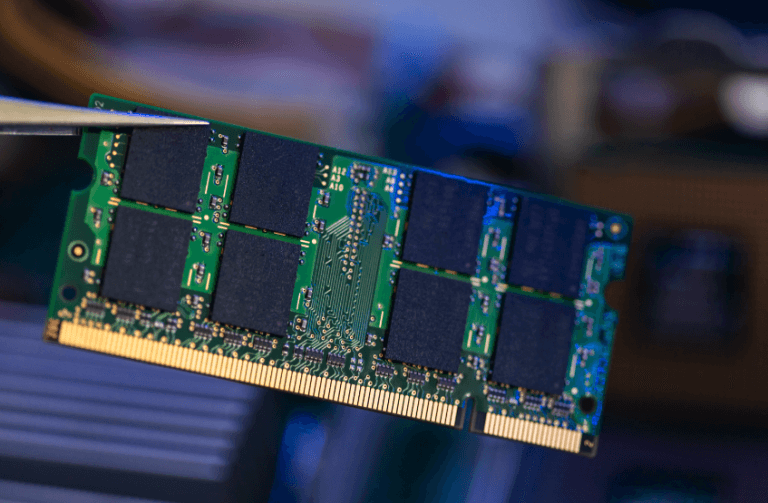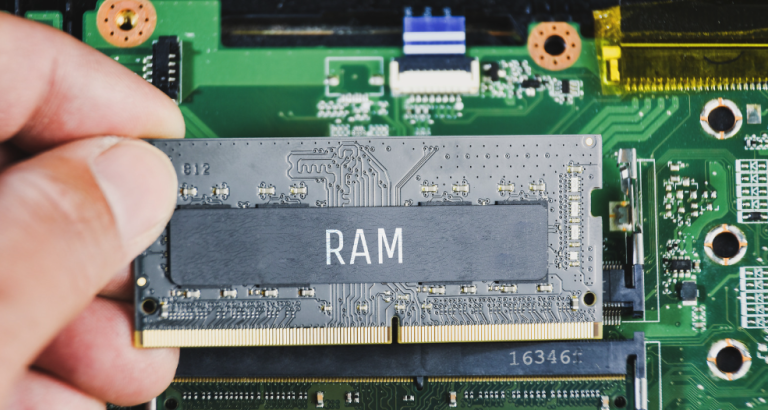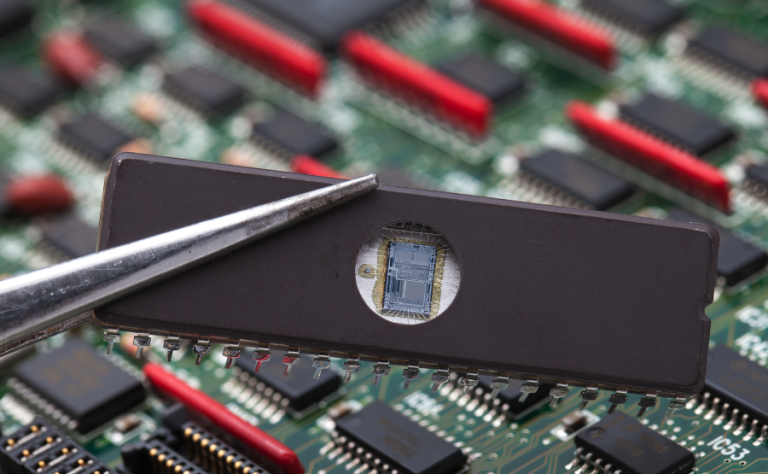Memory Chips 101: Everything You Need to Know

More from the Category
Memory chips play a vital role in the functionality of modern electronic devices by enhancing operational efficiency and user experience. Tasked with data storage and retrieval, memory chips are the backbone of digital processing containing the instructions needed for devices to function. In this guide, we will explore the different types of memory chips, highlight their unique features and discuss the pros and con’s of each.
Random Access Memory (RAM)

Random access memory offers temporary data storage while a device is in use. This means RAM needs continuous power to retain information and will erase data once the device is powered off.
Advantage: Random access memory speeds up the computing process by allowing for quick modifications to data without permanent storage, making it much faster than long-term storage like hard drives or SSDs.
Types of RAM

Dynamic RAM (DRAM)
Found in personal computing devices, DRAM stores bits of data in separate capacitors within an integrated circuit.
Pro: Cost Effective
Con: Requires frequent refreshing of data, which can slow down processing
Static RAM (SRAM)
The SRAM chip retains data as long as power is supplied, removing the need for data refreshing.
Pro: Known for its speed. Faster and more reliable than DRAM
Con: More complex and has a higher production cost
Synchronous Dynamic RAM (SDRAM)
This type of RAM works in sync with the system clock, coordinating data transfers to match the system timing.
Pro: Improved processing speed and efficiency
Con: High power consumption
Double Data Rate SDRAM (DDR SDRAM)
Doubling the data rate of standard SDRAM, this type of RAM transfers data on both the rising and falling edges of the clock signal.
Pro: Increased data transfer rate and improved system performance
Con: Higher cost and possible compatibility issues with older motherboards
Read Only Memory (ROM)
Read only memory (ROM) contains essential firmware and system software needed to initialize and operate hardware. These types of memory chips store data permanently regardless of power availability and cannot be modified.
Pro: Reliable and stable for essential operations.
Con: Cannot be modified or updated.
Types of ROM
Programmable ROM (PROM)
Post-manufacture, this type of ROM is programmed once, and the data remains fixed.
Pro: Allows for customized firmware installations, tailoring devices to specific requirements.
Con: Once written, it cannot be reprogrammed or altered
Erasable PROM (EPROM)
Using ultraviolet light, EPROM can be erased and reprogrammed multiple times
Pro: Allows flexibility for software updates or corrections
Con: Erasing data is time-consuming and cannot be done selectively, the entire chip must be erased.
Electrically Erasable PROM (EEPROM)
A step up from Erasable PROM, EEPROM can be reprogrammed electrically without the need for physical exposure to light.
Pro: Enhanced usability and adaption to evolving software requirements
Con: Limited data retention period (typically around 10 years)
Flash Memory
Flash memory is a type of volatile memory and is typically used in USB drives, SSD’s and memory cards.
Pro: Allows fast and easy data storage and retrieval
Con: Limited amount of write and erase cycles
Other Types of Memory Chips
In addition to the well-known RAM and ROM, there are several other specialized types of memory chips.
Cache Memory
Cache memory chips store frequently accessed information close to the processor, reducing the time it takes for the CPU to access data.
Pro: Accelerated data retrieval process
Con: Limited storage capacity
Virtual Memory
Virtual memory allocates space on hard drives to act as a temporary RAM to handle larger workloads and run more applications.
Pro: Provides a cost-effective way to increase memory capacity without adding more physical RAM.
Con: Can lead to slower system performance.
Register Memory
Register memory is positioned within the CPU and processes tasks immediately by holding the data the CPU needs in real-time.
Pro: The fastest type of memory
Con: Limited storage capacity
Memory Cards and Memory Modules
Memory cards and memory modules are portable storage solutions that cater to a wide array of device requirements.
Pro: Portable and reliable
Con: Limited write cycles
Emerging Memory Chip Technologies
As technology continues to advance, memory chips will continue to see innovations in speed, power consumption, and scalability. Some emerging memory chip technologies include MRAM, RRAM, and PCM.
MRAM (Magnetoresistive Random Access Memory)
MRAM uses magnetic states to store data.
Pro: Fast read and write speeds
Con: Higher cost compared to traditional memory types
RRAM (Resistive Random Access Memory)
RRAM stores data by changing the resistance across a dielectric sold-state material.
Pro: High speed with low power consumption
Con: Still in the developmental stage
PCM (Phase Change Memory)
PCM uses the phase change of materials to store data
Pro: High speed and good scalability
Con: Higher power consumption
The Future of Memory Chips
From the fast and temporary storage offered by RAM to the permanent and reliable storage provided by ROM, each type of memory chip plays a pivotal role in the functionality and performance of electronic devices. As technology continues to advance, memory chips will only continue to revolutionize our data-driven world, offering faster speeds, higher capacities, and improved reliability.
Looking for a type of memory chip? Browse our inventory of memory chips Or speak with an expert for personalized assistance finding the memory chip you need!









